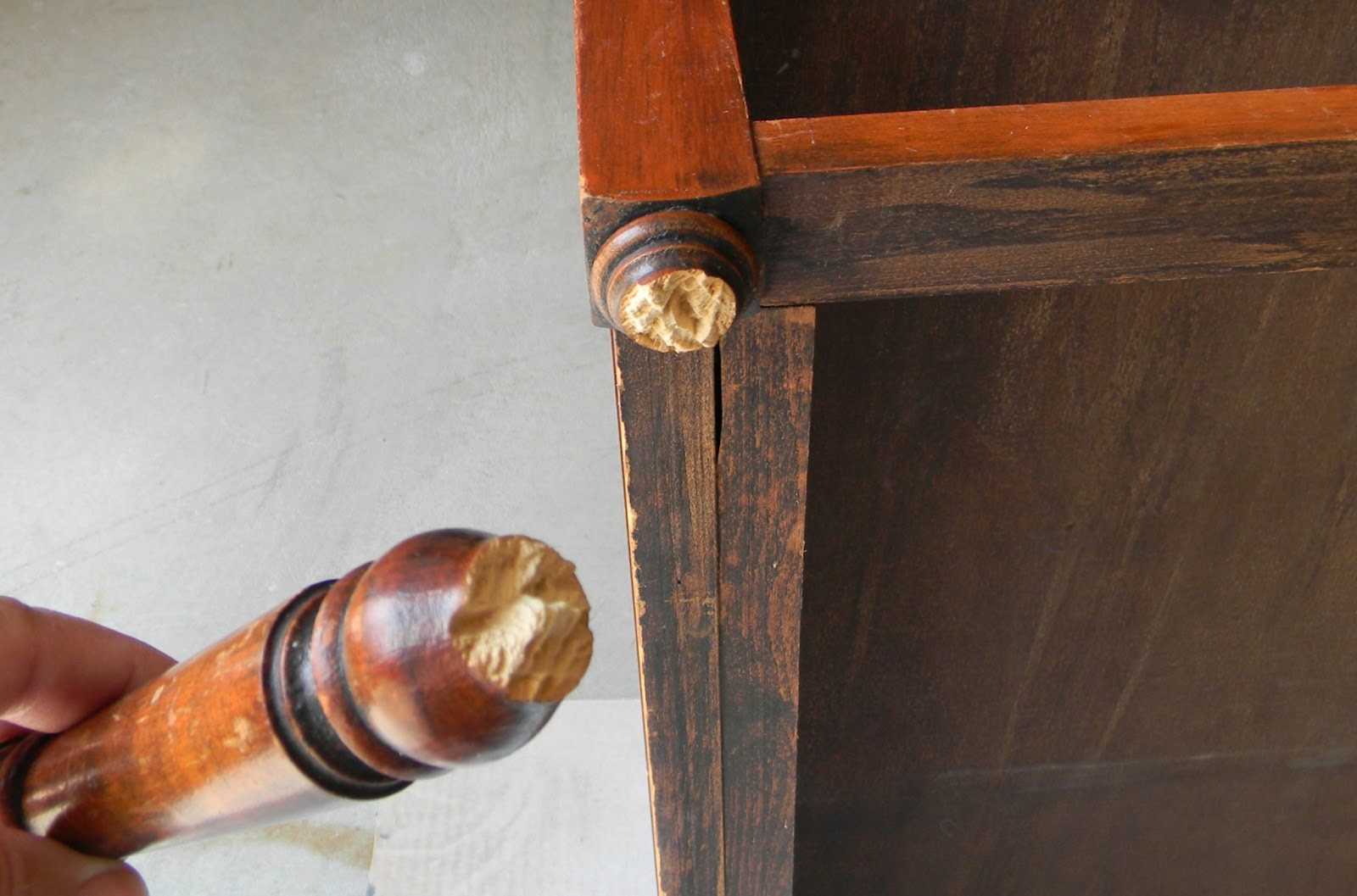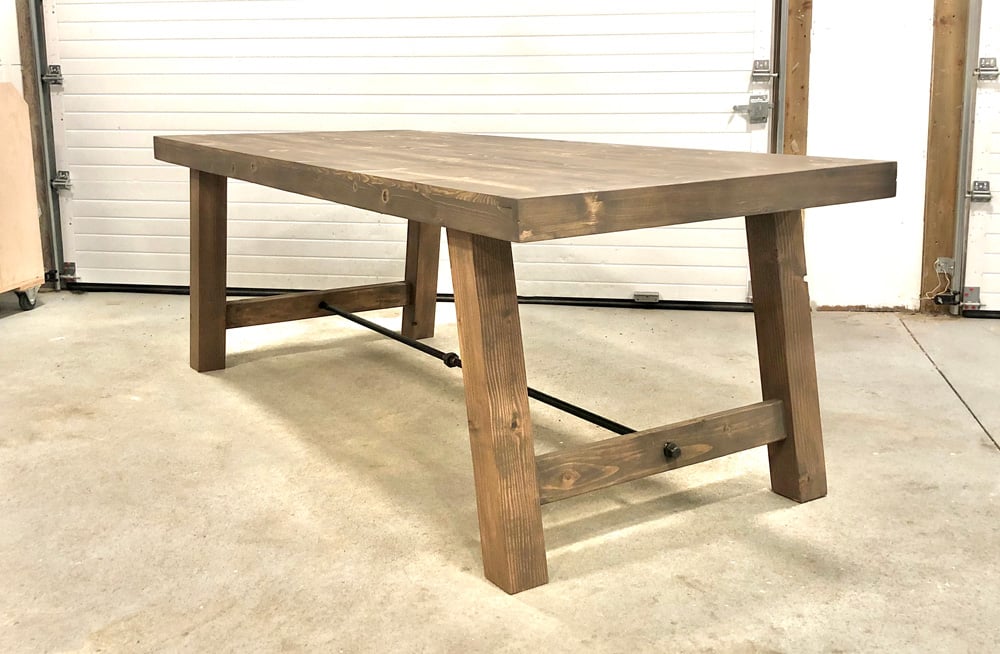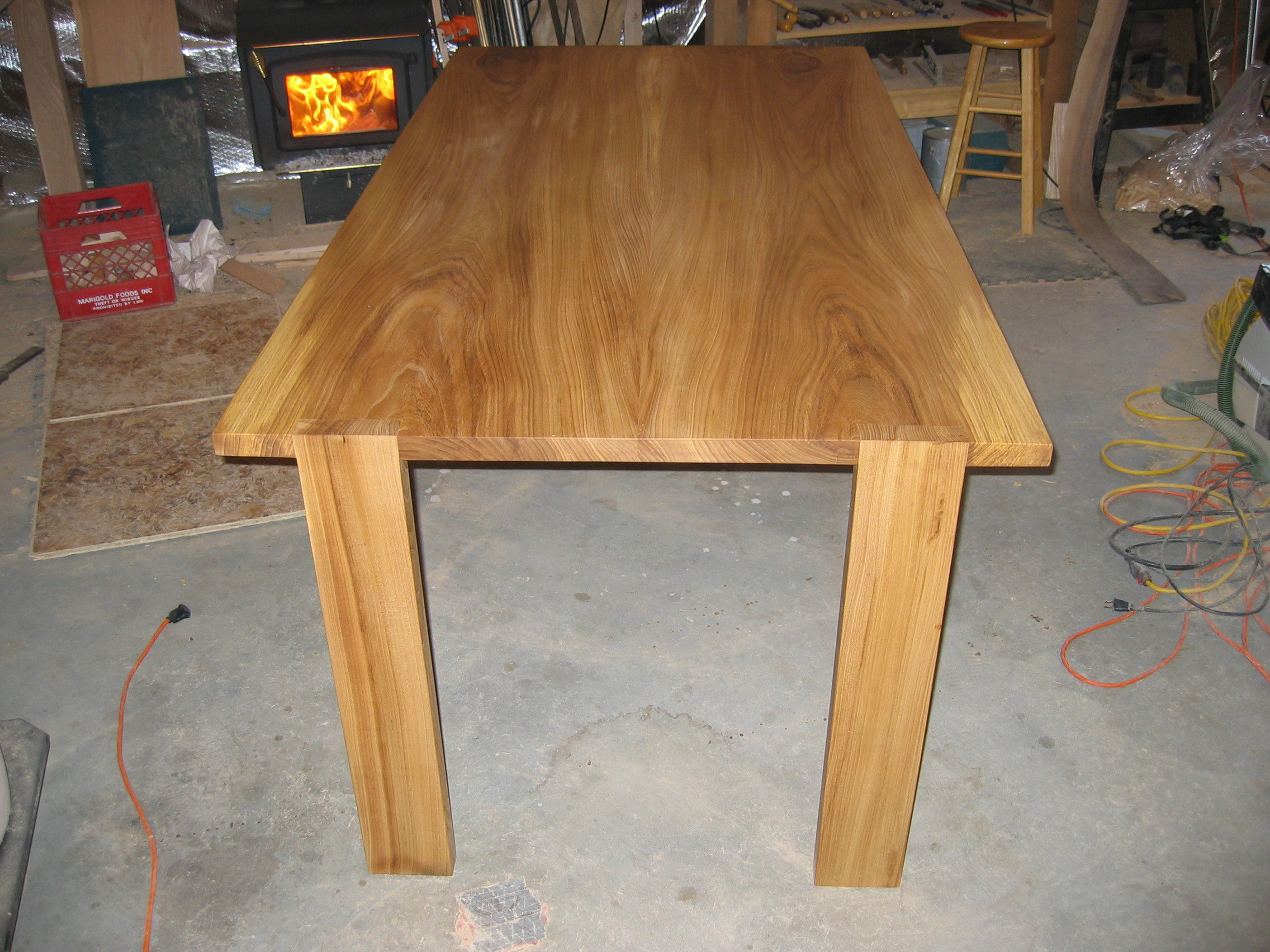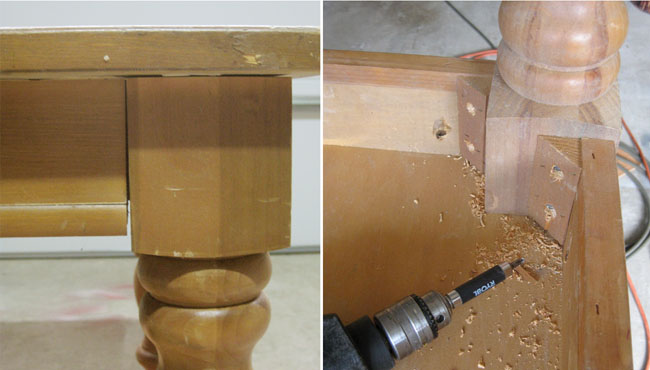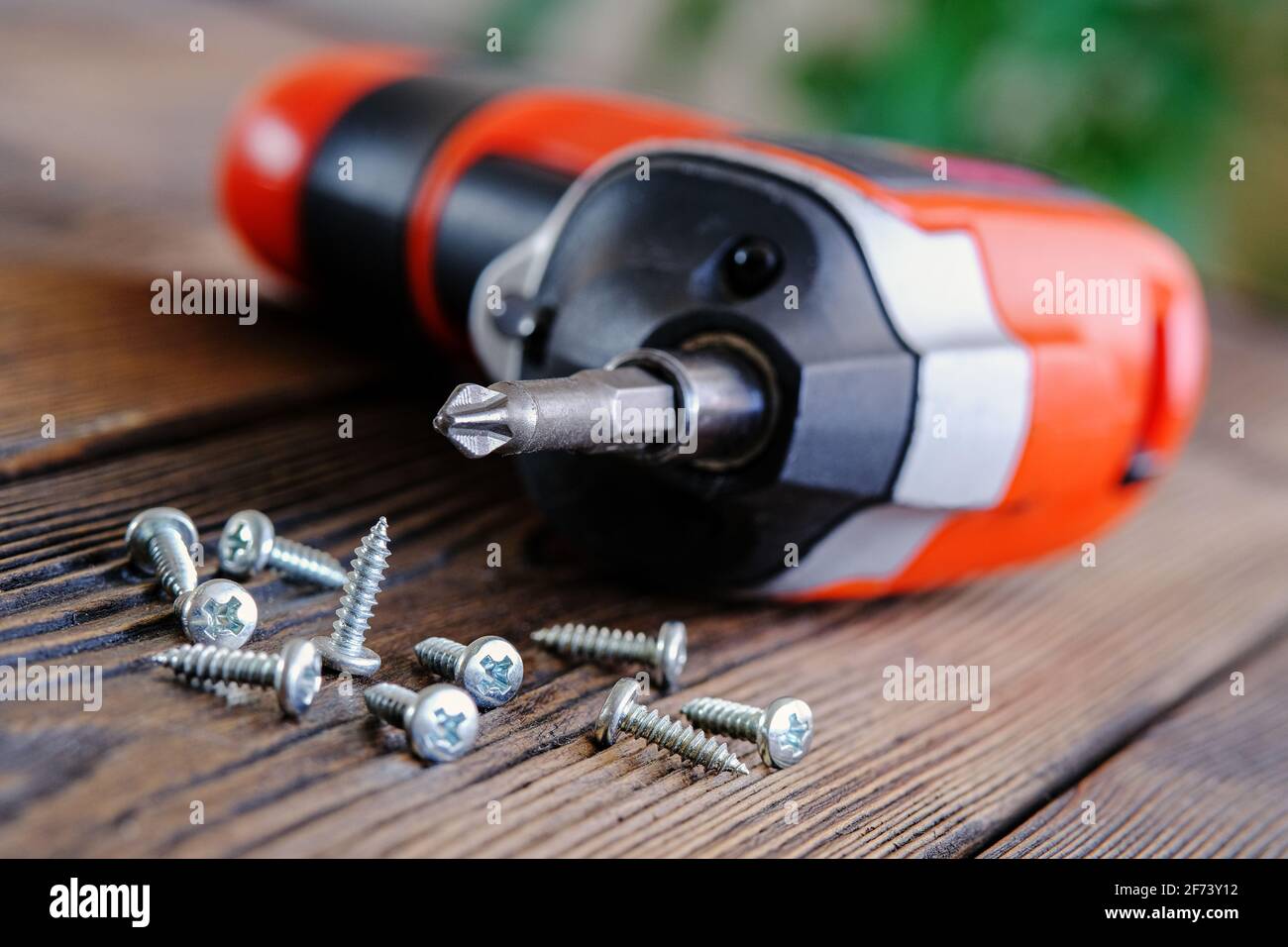If you've noticed that your kitchen table is wobbling or one of the legs seems to be coming loose, don't panic. This is a common issue that can be easily fixed with a few simple steps. Here's a guide on how to fix loose kitchen table legs and restore stability to your dining area.How to Fix Loose Kitchen Table Legs
There are several methods you can try to secure loose kitchen table legs, depending on the severity of the issue and the type of table you have. Here are five possible solutions to consider: 1. Tighten the Screws 2. Add Brackets 3. Use Wood Glue 4. Replace the Leg 5. Consult a Professional5 Ways to Secure Loose Kitchen Table Legs
One of the most common reasons for loose table legs is that the screws holding them in place have come loose over time. You can use a screwdriver or drill to tighten these screws and see if that solves the problem.
If tightening the screws doesn't work, you may need to add additional support to the legs. One option is to use brackets, which can be attached to the table and the leg for added stability.
For more serious cases, where the leg is completely detached from the table, you can use wood glue to reattach it. Apply a generous amount of glue to both the leg and the table, then hold them together until the glue dries.
If the leg is beyond repair, you may need to replace it altogether. This is a more involved solution, but it will ensure that your table is stable and secure in the long run.
If you're not comfortable attempting to fix the loose leg yourself, or if the issue seems more complex, it's best to consult a professional carpenter or furniture repair specialist. They will have the expertise and tools to properly fix the issue and ensure that your table is stable and safe to use.
Understanding the root cause of your loose kitchen table legs can help you prevent the issue from reoccurring in the future. Here are some common reasons why table legs may become loose: 1. Regular Use 2. Humidity and Temperature Changes 3. Poor Quality Materials 4. Damage or Wear and TearCommon Causes of Loose Kitchen Table Legs
Over time, the constant weight and movement of people sitting and standing around the table can cause the screws to loosen and the legs to become wobbly.
Wooden tables can expand and contract with changes in humidity and temperature, which can cause the screws to become loose and the legs to shift.
If your kitchen table is made from cheap or low-quality materials, it may not have been built to withstand regular use and could be more prone to loose legs.
Accidents, spills, and general wear and tear can all contribute to loose table legs over time.
If you're a handy person and enjoy DIY projects, you may be able to fix your loose kitchen table legs yourself. Here are a few DIY solutions to try: 1. Use Toothpicks 2. Try Wood Filler 3. Use a Rubber MalletDIY Solutions for Loose Kitchen Table Legs
If the screws in your table legs have become loose and won't tighten properly, you can insert toothpicks into the holes to create a tighter fit. Simply break off the ends of the toothpicks and insert them into the holes before screwing the legs back in place.
For more severe cases where the holes for the screws have become too big, you can use wood filler to create a new, tighter hole. Once the filler has dried, you can then screw the legs back in place.
If your table legs have become slightly uneven, you can use a rubber mallet to tap them back into place. This should help to tighten the legs and make them more stable.
Brackets can be a great solution for securing loose kitchen table legs. Here's how to use them: 1. Measure and Mark 2. Drill Holes 3. Attach the Bracket 4. Repeat for All LegsUsing Brackets to Fix Loose Kitchen Table Legs
Start by measuring the distance between the table and the leg. Then, mark the spot where you will attach the bracket on both the table and the leg.
Using a drill, create holes in the marked spots on both the table and the leg.
Place the bracket over the holes and screw it into place on both the table and the leg.
Repeat this process for all legs of the table. The brackets will provide added support and stability to the legs.
If your table leg is beyond repair, you may need to replace it. Here's how: 1. Remove the Old Leg 2. Measure and Cut the New Leg 3. Drill Holes 4. Attach the New Leg 5. Repeat for All LegsReplacing Loose Kitchen Table Legs
Using a screwdriver or drill, remove the screws holding the old leg in place. Then, gently remove the leg from the table.
Measure the length of the old leg and use a saw to cut the new leg to the same length.
Using a drill, create holes in the new leg where the screws will go.
Place the new leg in place and screw it into the table using the pre-drilled holes.
Repeat this process for all legs of the table. Make sure to double-check that all legs are securely attached and the table is stable before using it.
If your table leg has become detached from the table, you can use wood glue to fix the issue. Here's how: 1. Clean the Surfaces 2. Apply the Glue 3. Reattach the Leg 4. Let it DryTightening Loose Kitchen Table Legs with Wood Glue
Start by cleaning the surfaces of both the leg and the table to ensure the glue will bond properly.
Using a paintbrush or spatula, apply a generous amount of wood glue to both the leg and the table.
Press the leg back into place on the table and hold it there until the glue dries. You may need to use clamps or heavy objects to keep the leg in place if it is particularly heavy.
Allow the glue to dry completely before using the table. This may take several hours to overnight.
To avoid having to deal with loose kitchen table legs in the future, here are some preventative measures you can take: 1. Regular Maintenance 2. Avoid Extremes 3. Use Quality MaterialsPreventing Loose Kitchen Table Legs
Make it a habit to regularly check and tighten the screws on your table legs to prevent them from becoming loose over time.
Try to keep your table away from extreme temperatures and humidity, as these can cause the wood to expand and contract, potentially loosening the screws.
Invest in a high-quality kitchen table that is built to withstand regular use and will be less likely to experience loose legs.
If your table legs are severely damaged or you're not comfortable attempting to fix them yourself, it's best to seek professional help. A carpenter or furniture repair specialist will have the expertise and tools to properly fix your loose kitchen table legs and ensure that they are stable and safe to use.Professional Repair Options for Loose Kitchen Table Legs
If you're unsure whether your kitchen table legs are loose or not, here are a few signs to look out for: 1. Wobbling or Uneven Table 2. Visible Gaps 3. Loose Screws In conclusion, loose kitchen table legs are a common issue that can be easily fixed with the right techniques. By following these tips, you can secure your table legs and ensure that your dining area remains stable and safe for years to come.How to Identify Loose Kitchen Table Legs
If your table is wobbling or feels uneven when you sit at it, this could be a sign that one or more legs are loose.
If you can see gaps between the leg and the table, this is a clear indication that the leg is not securely attached.
If you can easily turn the screws holding the legs in place, this is a sign that they need to be tightened.
The Importance of Sturdy Kitchen Table Legs in House Design

Creating a Functional and Aesthetically Pleasing Kitchen
 When it comes to house design, the kitchen is often considered the heart of the home. It is where meals are prepared, conversations are had, and memories are made. As such, it is important for this space to be functional and aesthetically pleasing. One key aspect of a functional kitchen is having a sturdy
kitchen table
with
strong legs
. Loose or wobbly table legs can not only be a safety hazard, but they can also make the kitchen look unkempt and uninviting. In this article, we will discuss the importance of
maintaining
and
reinforcing
kitchen table legs
to create a beautiful and functional kitchen.
When it comes to house design, the kitchen is often considered the heart of the home. It is where meals are prepared, conversations are had, and memories are made. As such, it is important for this space to be functional and aesthetically pleasing. One key aspect of a functional kitchen is having a sturdy
kitchen table
with
strong legs
. Loose or wobbly table legs can not only be a safety hazard, but they can also make the kitchen look unkempt and uninviting. In this article, we will discuss the importance of
maintaining
and
reinforcing
kitchen table legs
to create a beautiful and functional kitchen.
Ensuring Safety and Stability
 The kitchen is a high-traffic area, with people constantly moving around and using various appliances and utensils. This makes it crucial for all furniture, including the kitchen table, to be properly secured and stable. Loose or wobbly table legs can pose a serious safety risk, especially for young children who may be prone to climbing or pulling on furniture. Additionally, a wobbly table can cause spills and accidents, which can be not only messy but also dangerous. By regularly checking and fixing loose table legs, homeowners can ensure the safety and stability of their kitchen.
The kitchen is a high-traffic area, with people constantly moving around and using various appliances and utensils. This makes it crucial for all furniture, including the kitchen table, to be properly secured and stable. Loose or wobbly table legs can pose a serious safety risk, especially for young children who may be prone to climbing or pulling on furniture. Additionally, a wobbly table can cause spills and accidents, which can be not only messy but also dangerous. By regularly checking and fixing loose table legs, homeowners can ensure the safety and stability of their kitchen.
Enhancing the Aesthetic Appeal
 In addition to safety concerns, loose kitchen table legs can also affect the overall aesthetic appeal of the kitchen. A wobbly table can make the space look disorganized and unkempt, which is not ideal for a room that is often used for entertaining guests. It can also make it difficult to use the table for tasks such as chopping vegetables or rolling out dough, as it may not provide a sturdy surface. By reinforcing and maintaining the
sturdiness
of
kitchen table legs
, homeowners can create a more visually appealing and functional kitchen.
In addition to safety concerns, loose kitchen table legs can also affect the overall aesthetic appeal of the kitchen. A wobbly table can make the space look disorganized and unkempt, which is not ideal for a room that is often used for entertaining guests. It can also make it difficult to use the table for tasks such as chopping vegetables or rolling out dough, as it may not provide a sturdy surface. By reinforcing and maintaining the
sturdiness
of
kitchen table legs
, homeowners can create a more visually appealing and functional kitchen.
The Importance of Regular Maintenance
 To ensure that
kitchen table legs
remain strong and stable, it is important to regularly check and maintain them. This can involve tightening bolts and screws, replacing damaged or worn out parts, and even adding extra support if needed. Homeowners can also consider investing in high-quality
table legs
that are designed to withstand heavy use and provide long-lasting stability. By incorporating regular maintenance into their household routine, homeowners can maintain a beautiful and functional kitchen for years to come.
To ensure that
kitchen table legs
remain strong and stable, it is important to regularly check and maintain them. This can involve tightening bolts and screws, replacing damaged or worn out parts, and even adding extra support if needed. Homeowners can also consider investing in high-quality
table legs
that are designed to withstand heavy use and provide long-lasting stability. By incorporating regular maintenance into their household routine, homeowners can maintain a beautiful and functional kitchen for years to come.
In Conclusion
 In conclusion,
kitchen table legs
play a crucial role in creating a functional and aesthetically pleasing kitchen. Loose or wobbly table legs can pose a safety hazard and affect the overall appearance of the space. By regularly maintaining and reinforcing the stability of
kitchen table legs
, homeowners can ensure the safety and visual appeal of their kitchen. So, if you notice your kitchen table legs are loose, don't hesitate to take the necessary steps to fix them and keep your kitchen looking and functioning at its best.
In conclusion,
kitchen table legs
play a crucial role in creating a functional and aesthetically pleasing kitchen. Loose or wobbly table legs can pose a safety hazard and affect the overall appearance of the space. By regularly maintaining and reinforcing the stability of
kitchen table legs
, homeowners can ensure the safety and visual appeal of their kitchen. So, if you notice your kitchen table legs are loose, don't hesitate to take the necessary steps to fix them and keep your kitchen looking and functioning at its best.





